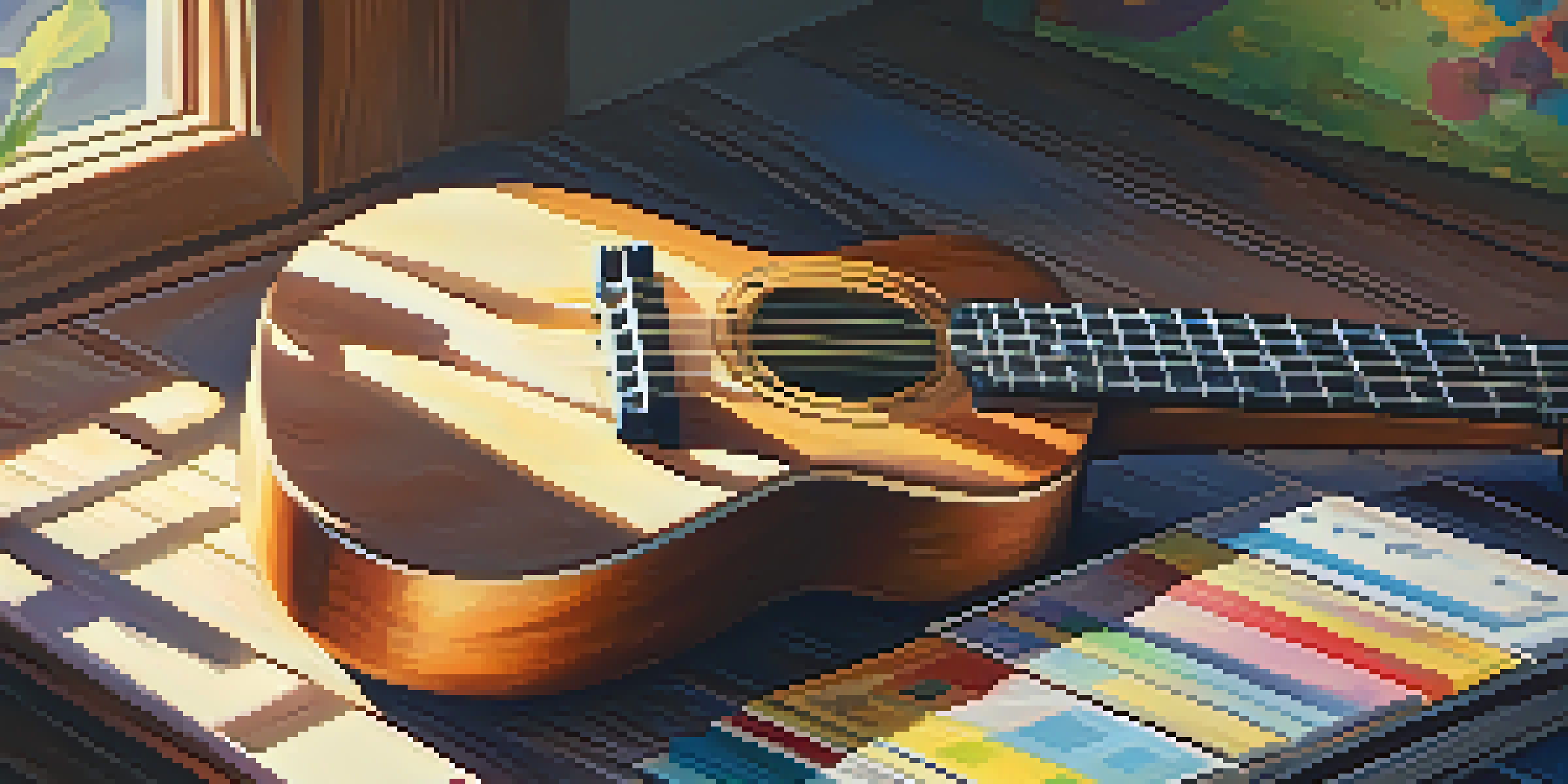Exploring Alternate Tunings for Creative Ukulele Techniques

Understanding Alternate Tunings: A Creative Tool
Alternate tunings can open up a whole new world for ukulele players. By adjusting the standard G-C-E-A tuning, you can access different chords and melodies that might be hidden in traditional playing.
Music is the shorthand of emotion.
Think of alternate tunings as a new lens through which you can view familiar songs. Just like how a painter uses various brushes for different effects, you can experiment with different tunings to create unique sounds.
For instance, tuning your ukulele to D-G-B-E can give you a fresh take on classic tunes and inspire new compositions. This approach not only enhances your creativity but also expands your musical vocabulary.
Popular Alternate Tunings to Try
There are several popular alternate tunings that ukulele players love. Some of the most common ones include D-Tuning (D-A-D-F#) and C6 tuning (C-E-G-A-C-E), each offering distinctive sounds and chord shapes.

D-Tuning, for example, retains a bright sound while allowing for deeper bass notes, making it perfect for fingerstyle playing. Meanwhile, C6 tuning can introduce jazzier elements into your music, perfect for exploring new genres.
Unlock Creativity with Alternate Tunings
Experimenting with alternate tunings can inspire new chord progressions and melodies that enhance your musical creativity.
Trying out these tunings can be as simple as re-stringing your ukulele or adjusting your current strings. Just remember, the goal is to experiment and find what resonates with you musically.
Exploring Fingerstyle Techniques with Alternate Tunings
Fingerstyle playing benefits greatly from alternate tunings, as they often allow for more complex finger placements. When you change the tuning, you can create unique arpeggios and harmonies that aren’t possible in standard tuning.
Creativity takes courage.
For example, using G-D-A-D tuning can produce beautiful drone notes while you play melodies on the higher strings. This technique can add depth and richness to your pieces, making them more engaging.
As you explore fingerstyle in different tunings, listen closely to the sound you create. You might discover new musical ideas that inspire your next composition or arrangement.
Using Alternate Tunings for Songwriting
Songwriting often thrives on fresh ideas, and alternate tunings can be the spark you need. By changing the tuning, you might find unexpected chord progressions or melodies that you wouldn't have thought of in standard tuning.
For instance, if you tune your ukulele to A-E-C#-F# and start strumming, you might stumble upon a catchy hook that inspires an entire song. This element of surprise can lead to a more organic songwriting process.
Enhance Fingerstyle Techniques
Alternate tunings allow for unique finger placements, enabling more complex arpeggios and harmonies in your playing.
So, the next time you feel stuck in your writing, grab your ukulele and try a different tuning. You never know what musical gems you might uncover!
Improvisation: A New Dimension with Alternate Tunings
Improvisation takes on a whole new dimension when you play in alternate tunings. The different chord shapes and scales can inspire spontaneous musical ideas that might not come to you in standard tuning.
For example, experimenting with open tunings can give you a more resonant and fuller sound, which can be particularly liberating during jam sessions. The freedom to explore can lead to exciting musical dialogues.
To make the most of this creative process, consider jamming with other musicians who also enjoy alternate tunings. It can really enhance your improvisational skills and deepen your musical connection.
Tips for Transitioning to Alternate Tunings
Transitioning to alternate tunings can feel daunting, but it’s all about taking small steps. Start by familiarizing yourself with one tuning at a time, and try playing simple songs that you already know.
Using chord charts specific to the alternate tuning can help ease the transition. Plus, there are many online resources and communities that share tips and tricks for playing in various tunings.
Embrace Experimentation in Music
The journey of exploring different tunings fosters personal expression and helps you develop a unique musical style.
Don’t forget to be patient with yourself! As you practice, you’ll become more comfortable navigating the new chord shapes and sounds, ultimately enhancing your overall playing experience.
The Joy of Experimentation: Embrace Your Sound
At the heart of exploring alternate tunings is the joy of experimentation. Allow yourself to play around, make mistakes, and discover what sounds you enjoy most.
Every tuning opens a door to a different musical landscape, encouraging you to break away from the norm and express your individuality. Whether you find yourself in bright, vibrant sounds or deep, resonant tones, the journey is what matters.

Remember, music is a personal expression. Embracing alternate tunings can help you forge your unique sound and style, leading to a more fulfilling musical journey.